The history of the Department begins with the laboratory of electrochemistry of organic compounds, organised in 1987 under the leadership of Doctor of Chemical Sciences, Professor Galina Serhiivna Shapoval at the Division of Petrochemistry of the Institute of Physical Organic Chemistry and Coal Chemistry of the Academy of Sciences of the Ukrainian SSR. In 1988, the laboratory headed by Prof. G.S. Shapoval was transferred to the Institute of Bioorganic Chemistry (since 1989 – Institute of Bioorganic Chemistry and Petrochemistry). In 1997, the laboratory, which by that time had become a powerful scientific unit of the Institute of Bioorganic Chemistry and Petrochemistry of the National Academy of Sciences of Ukraine, was reorganised into the Research Department of Electrochemistry of Organic Compounds. Since 2008, the Department has been headed by Doctor of Chemical Sciences, Professor Oleksandr Pud. Due to a change in scientific directions in 2011, the Department was renamed the Department of Chemistry of Functional Materials. In 2024, a group dedicated to the development, experimental, and industrial implementation of lubricating materials was acquired by the Department.
Currently, the Department's priority research interests cover a wide range of tasks related to the synthesis, study and use of conjugated biocompatible polymers, including (electrically conductive polymers) and composites based on them, as well as the development of lubricants with improved performance properties. In particular, our efforts are focused on:
The developed materials can also be used in photovoltaic and electrochromic devices, as well as for the protection of metals against corrosion, etc.
The fundamental and applied research of the department is aimed at developing and studying new multifunctional hybrid nanocomposites of conjugated polymers with reversible sensitivity to various physical and chemical influences and the ability to register or sense changes in the atmosphere or breathing of patients, carry diagnostic preparations or medicines in their composition in the human body, absorb heavy metal ions and toxic organic compounds from various natural waters and other environments; screen/absorb electromagnetic radiation, etc. Special attention is paid to the use of developed materials for the sorption of harmful compounds from aqueous environments and the study of latexes of electroconductive polymer nanocomposites with thermo- and photosensitivity, testing and application of lubricants based on vegetable oil and fat feedstocks and byproducts from their production with improved operational and environmental characteristics.
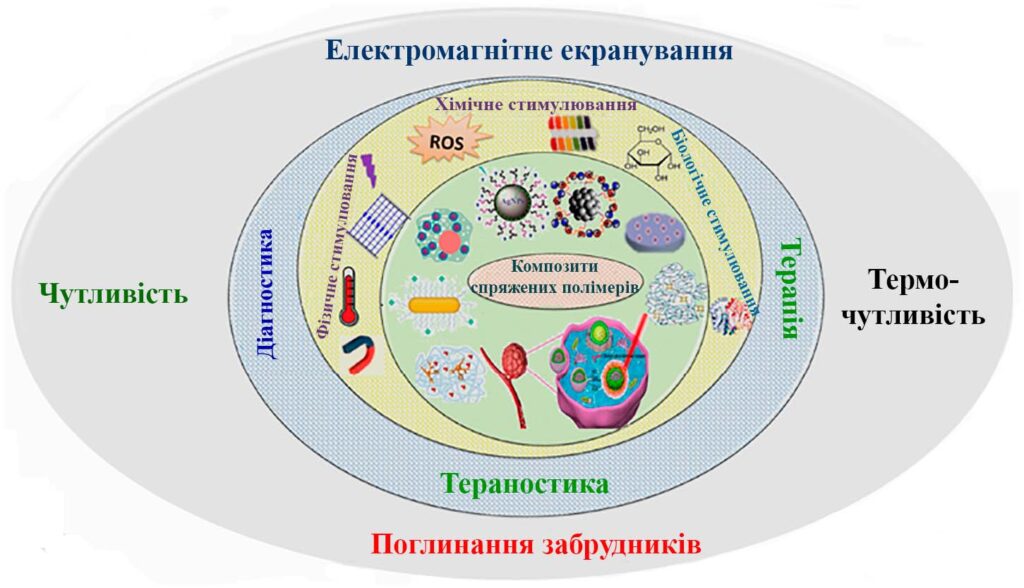
Adapted from M. Aflori, Nanomaterials 2021, 11, 396





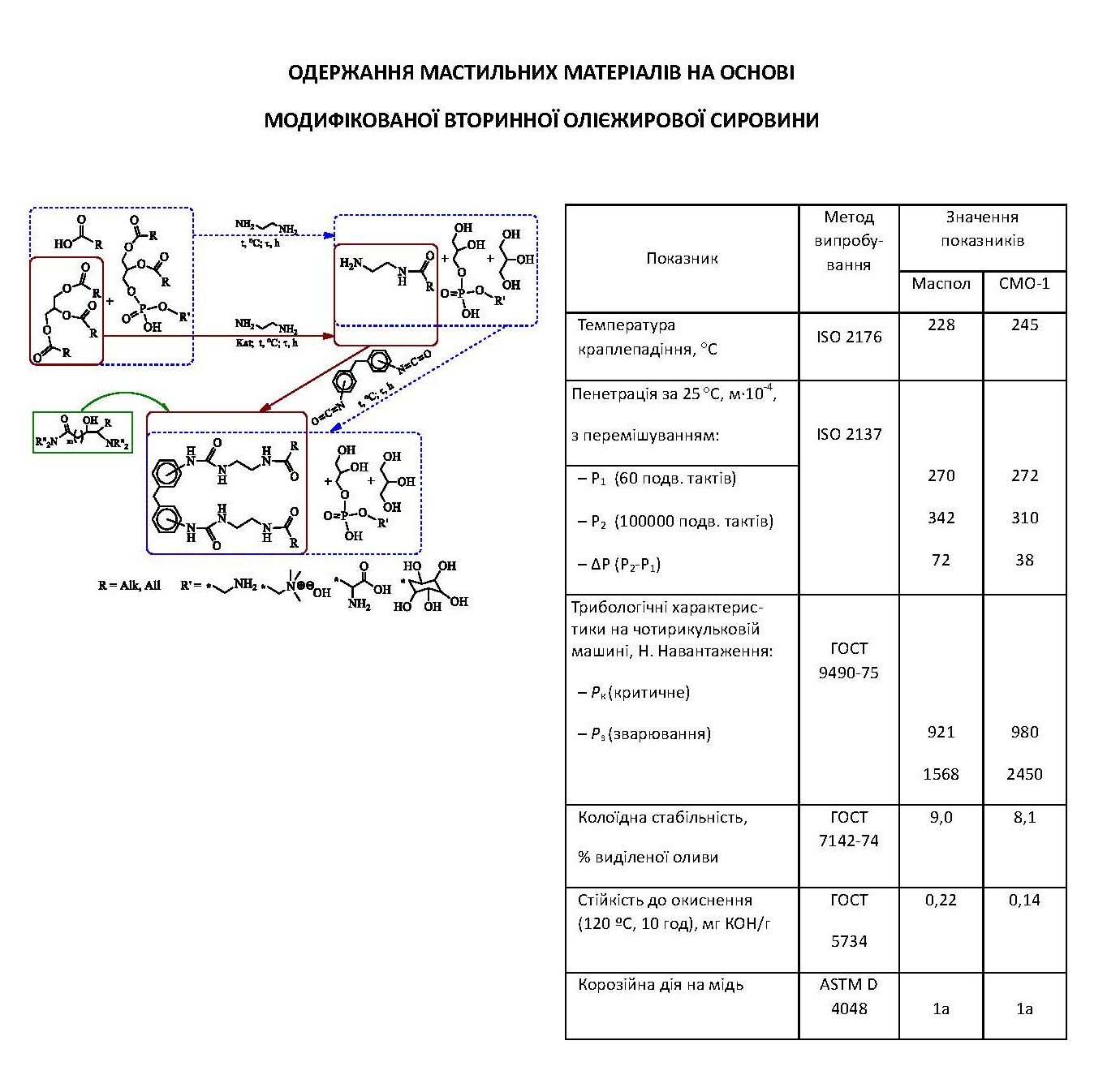
Mykola Ogurtsov, Candidate of Chemical Sciences, Senior Researcher

ORCID 0000-0002-5193-2276
Senior Research Fellow at the Department of Chemistry of Functional Materials of the V.P. Kukhar Institute of Bioorganic Chemistry and Petrochemistry of the NAS of Ukraine. Graduated from the Faculty of Chemistry at the Lomonosov Moscow State University. In 1991, he received his PhD in Chemistry from the L.V. Pisarzhevsky Institute of Physical Chemistry, National Academy of Sciences of Ukraine, Kyiv. His current research interests focus on the synthesis of nanocomposites based on electrically conductive polymers and the study of the structure-property relationship of such materials. https://scholar.google.com.ua/citations?user=1H-h2qAAAAAJ&hl=uk
Yurii Noskov, Candidate of Chemical Sciences
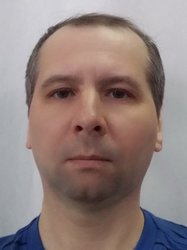
ORCID 0000-0002-4192-1733
Senior Research Fellow at the Department of Chemistry of Functional Materials of the V.P. Kukhar Institute of Bioorganic Chemistry and Petrochemistry of the NAS of Ukraine. Graduated from Taras Shevchenko National University of Kyiv, Faculty of Chemistry (2004). In 2010, he received a PhD degree in the chemistry of high molecular weight compounds from the Faculty of Chemistry of Taras Shevchenko National University of Kyiv. His research interests focus on the synthesis of conjugated polymers and their multifunctional hybrid nanocomposites, nanoparticles and their application as sensor materials in solar cells, drug delivery systems, and other areas of interest.
Nataliia Davydenko, Candidate of Chemical Sciences

ORCID 0000-0002-5800-0922
Junior Research Fellow at the Department of Chemistry of Functional Materials of the V.P. Kukhar Institute of Bioorganic Chemistry and Petrochemistry of the NAS of Ukraine. She is a graduate of the Department of Physical and Colloid Chemistry, Faculty of Chemistry, Ivan Franko National University of Lviv (Lviv, 2009) and received PhD (physical chemistry) degree in 2016 at the same university. Her research encompasses the synthesis of conductive polymers and their nanocomposites, as well as the design of gas sensors based on these nanocomposites.
Iryna Myroniuk

ORCID 0000-0003-3898-9478
Junior Research Fellow at the Department of Chemistry of Functional Materials of the V.P. Kukhar Institute of Bioorganic Chemistry and Petrochemistry of the NAS of Ukraine. She graduated from Taras Shevchenko National University of Kyiv, Faculty of Physics (1994). Her research interests focus on electrically conductive polymers and their hybrid nanocomposites, as well as the manufacturing of chemical and biological sensors based on these multifunctional hybrid nanomaterials.
Olha Krugyiak
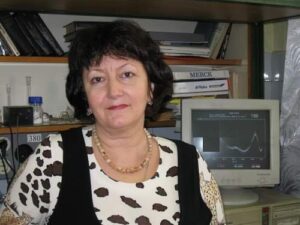
https://orcid.org/0000-0003-0704-3436
Engineer at the Department of Chemistry of Functional Materials of the V.P. Kukhar Institute of Bioorganic Chemistry and Petrochemistry of the NAS of Ukraine. She graduated from the Kyiv Polytechnic Institute, Faculty of Composite Materials (1979). Her current research interests include studying the sensory properties of nanocomposites based on various electrically conductive polymers and identifying and quantifying specific gases contained in indoor air or ambient air.
Larysa Bodachivska, Candidate of Technical Sciences
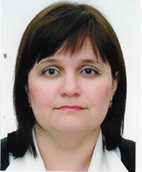
https://orcid.org/0000-0001-9575-6641
Senior Research Fellow at the Department of Chemistry of Functional Materials of the V.P. Kukhar Institute of Bioorganic Chemistry and Petrochemistry of the NAS of Ukraine. In 2007, she received a PhD degree in System Analysis and Optimal Decision Theory from the Faculty of Cybernetics at Taras Shevchenko National University of Kyiv. Her research interests include the synthesis of emulsifier stabilisers based on modified natural raw materials and the development of microemulsion and lubricant compositions for various functional purposes.
Oleh Safronov, Candidate of Technical Sciences

https://orcid.org/0000-0001-9793-0965
Junior Research Fellow at the Department of Chemistry of Functional Materials of the V.P. Kukhar Institute of Bioorganic Chemistry and Petrochemistry of the NAS of Ukraine. In 2004, he graduated from the Faculty of Chemical Technology of the National Technical University of Ukraine 'Kyiv Polytechnic Institute' with a degree in Chemical Technology of Organic Substances. In 2021, he received a PhD in Chemical Technology of Fuels and Lubricants. His research interests include the synthesis and study of new lubricants, technical substances and their components.
Iryna Venger

https://orcid.org/0000-0003-3424-0451
Junior Research Fellow at the Department of Chemistry of Functional Materials of the V.P. Kukhar Institute of Bioorganic Chemistry and Petrochemistry of the NAS of Ukraine. Graduated from the Kyiv Institute of Civil Aviation Engineers (1988). Her interests are focused on the development of lubricants and research into their properties, particularly based on modified vegetable oil and fat raw materials, as well as on by-products of the food industry.
Cooperation with Institut Mines Télécom Lille Douai, France


Cooperation with the Faculty of Chemistry of Taras Shevchenko National University of Kyiv

Cooperation with Clemson University (USA)

1. Dual Stimuli-Responsive Ternary Core-Shell Polystyrene@Pnipam-Pedot Latexes. Vretik, Lyudmyla O., Noskov, Yuriy V., Chepurna, Oksana M., Ogurtsov, Nikolay A., Nikolaeva, Olena A., Marynin, Andrii I., Ohulchanskyy, Tymish Y., Pud, Alexander A. Particle and Particle Systems Characterization, 2024, 41(3), 2300096
2. PPy & P3MT-MWCNT Nanocomposites-Based Sensors for Nerve Gas Detection at ppb Levels. Redon N., Davydenko N., Ogurtsov N.A., Jamar M., Noskov Yu., Pud A., Wojkiewicz. J.-L. 2023 IEEE SENSORS, Vienna, Austria. 2023. P. 1-4.
DOI: 10.1109/SENSORS56945.2023.10325230
3. PVDF/poly(3-methylthiophene)/MWCNT nanocomposites for EMI shielding in the microwave range. Petrychuk, M.V., Oliynyk, V.V., Zagorodnii, V.V., Ogurtsov, N.A., Pud, A.A. Heliyon. , 2023, 9(12), e23101
DOI: 10.1016/j.heliyon.2023.e23101

4. Detection of the explosive nitroaromatic compound simulants with chemosensory systems based on quartz crystal microbalance and chemiresistive sensor arrays. Kazantseva, Z.I., Koshets, I.A., Mamykin, A.V., Pavluchenko, A.S., Kukla, O.L., Pud, A.A., Ogurtsov, N.A., Noskov, Yu. V., Rodik, R.V., Vyshnevskyy, S.G. Semiconductor Physics, Quantum Electronics and Optoelectronics, 2023, 26(3), pp. 332–342.
5. Іnfluence of carbon nanotubes on the electrical conductivity of pvdf/pani/mwcnt nanocomposites at low temperatures. Rudenko, R.M., Voitsihovska, O.O., Poroshin, V.M., Petrychuk M.V., Ogurtsov N.A. Noskov, Y.V., Pud, A.A. Ukrainian Journal of Physics, 2022, 67(2), pp. 140 – 148
https://doi.org/10.15407/ujpe67.2.140
6. “The Impact of Interfacial Interactions on Structural, Electronic and Sensing Properties of Poly(3‐methylthiophene) in the Core‐shell Nanocomposites Application to the CWA Simulants Detection”, N.A. Ogurtsov, A.V. Mamykin, O.L. Kukla, A.S. Pavluchenko, M.V. Borysenko, Yu.P. Piryatinski, J.-Luc Wojkiewicz, A.A. Pud, Macromolecular Materials and Engineering. 2022
7. “Synthesis and properties of core–shell halloysite–polyaniline nanocomposites”, Yu. Noskov, N. Ogurtsov, V. Bliznyuk, Yu. Lvov, I. Myronyuk, A. Pud, Applied Nanoscience, 2022, 12(4), pp. 1285–1294
DOI: 10.1007/s13204-021-01812-9
8. “Specific interactions and charge transport in ternary PVDF/polyaniline/MWCNT nanocomposite films”, R.M. Rudenko, O.O. Voitsihovska, V.M. Poroshin, M.V. Petrychuk, S.P. Pavlyuk, A.S. Nikolenko, N.A. Ogurtsov, Yu.V. Noskov, D.O. Sydorov, A.A. Pud, Composites Science and Technology 2020, 198, 108284.
DOI: 10.1016/j.compscitech.2020.108284

9. “Thermosensitive ternary core–shell nanocomposites of polystyrene, poly(N-isopropylacrylamide) and polyaniline”, L.O. Vretik, Yu.V. Noskov, N.A. Ogurtsov, O.A. Nikolaeva, A.V. Shevchenko, A. I. Marynin, M. S. Kharchuk, O. M. Chepurna, T. Y. Ohulchanskyy, A. A. Pud, Applied Nanoscience 2020, 10, 4951–4964.
DOI: 10.1007/s13204-020-01424-9
10. “On the importance of interface interactions in core-shell nanocomposites of intrinsically conducting polymers”, A.A. Pud, N.A. Ogurtsov, Yu.V. Noskov, S.D. Mikhaylov, Yu.P. Piryatinski, V.N. Bliznyuk, Semiconductor Physics, Quantum Electronics & Optoelectronics 2019, 22, 470-478.
DOI: https://doi.org/10.15407/spqeo22.04.470
11. “Polyaniline Doping by α, α-Difluoro-β-amino Acids”, Yu. Noskov, A. Sorochinsky, V. Kukhar, A. Pud, ACS Omega 2019, 4, 7400-7410.
12. “High effectiveness of pure polydopamine in extraction of uranium and plutonium from groundwater and seawater”, V.N. Bliznyuk, K. Kołacińska, A.A. Pud, N.A. Ogurtsov, Yu.V. Noskov, B.A. Powell, T.A. DeVol, RSC Advances 2019, 9, 30052-30063 1.
13. Polyaniline nanocomposites based sensor array for breath ammonia analysis. Portable e-nose approach to non-invasive diagnosis of chronic kidney disease P Le Maout, JL Wojkiewicz, N Redon, C Lahuec, F Seguin, L Dupont, Sergei Mikhaylov, YuriyNoskov, NikolayOgurtsov, Alexander Pud. Sensors and Actuators B: Chemical 274, 616-626, 31, 2018.
DOI: 10.1016/j.snb.2018.07.178
14. “Effect of the dopant anion and oxidant on the structure and properties of nanocomposites of polypyrrole and carbon nanotubes”, NA Ogurtsov, YV Noskov, OS Kruglyak, SI Bohvan, VV Klepko, M.V. Petrychuk, A.A. Pud, Theoretical and Experimental Chemistry 2018, 54, 114-121.
DOI: 10.1007/s11237-018-9554-x
15. “Poly (vinylidene fluoride)/poly (3-methylthiophene) core–shell nanocomposites with improved structural and electronic properties of the conducting polymer component”, N.A. Ogurtsov, V.N. Bliznyuk, A.V. Mamykin, O.L. Kukla, Yu.P. Piryatinski, A.A. Pud, Physical Chemistry Chemical Physics 2018, 20), 6450-6461.
DOI: 10.1039/C7CP07604E
16. “New nanocomposites of polystyrene with polyaniline doped with lauryl sulfuric acid”, A.A. Pud, O.A. Nikolayeva, L.O. Vretik, Yu.V. Noskov, N.A. Ogurtsov, O.S. Kruglyak, E.A. Fedorenko, Nanoscale research letters 2017, 12, 493.
DOI: 10.1186/s11671-017-2265-8
17. “UV-light induced solid-phase photodegradation in PANI nanocomposites”, S. Mikhaylov, A. Pud, J.-L. Wojkiewicz, P. Coddeville, 2017 IEEE 7th International Conference Nanomaterials: Application & Properties (NAP), 2017, 03NNSA09-1-03NNSA09-4.
18. “Influence of dispersed nanoparticles on the kinetics of formation and molecular mass of polyaniline”, N.A. Ogurtsov, S.D. Mikhaylov, P. Coddeville, J.-L. Wojkiewicz, G.V. Dudarenko, A.A. Pud, The Journal of Physical Chemistry B 2016, 120, 10106-10113.

19. “Acid-dopant effects in the formation and properties of polycarbonate-polyaniline composites”, Yu. Noskov, S. Mikhaylov, P. Coddeville, J.-L. Wojkiewicz, A. Pud, Synthetic Metals 2016, 217, 266-275.
DOI: 10.1016/j.synthmet.2016.04.015
20. “The PANI-DBSA content and dispersing solvent as influencing parameters in sensing performances of TiO2/PANI-DBSA hybrid nanocomposites to ammonia”, S. Mikhaylov, N.A. Ogurtsov, N. Redon, P. Coddeville, J.-L. Wojkiewicz, A. Pud, RSC Advances 2016, 6, 82625-82634.
21. “Evolution and Interdependence of Structure and Properties of Nanocomposites of Multiwall Carbon Nanotubes with Polyaniline”, N.A. Ogurtsov, Yu.V. Noskov, V.N. Bliznyuk, V.G. Ilyin, J.-L. Wojkiewicz, E.A. Fedorenko, A.A. Pud, The Journal of Physical Chemistry C 201, 120, 230-242.

22. “Anion-chromic” interactions of emeraldine base with hydroxide and halide anions in the solid polymer matrix”, A. Pud, I. Duboriz, Yu. Piryatinski, O. Dimitriev, Synthetic Metals 2015, 209, 232-239.
DOI: 10.1016/j.synthmet.2015.07.034
23. “Effect of multiwalled carbon nanotubes on the kinetics of the aniline polymerization: the semi-quantitative OCP approach”, N.A. Ogurtsov, Yu.V. Noskov, A.A. Pud, The Journal of Physical Chemistry B 2015, 119, 5055-5061.
DOI: 10.1021/jp511665q

24. “Ammonia/amine electronic gas sensors based on hybrid polyaniline–TiO2 nanocomposites. The effects of titania and the surface active doping acid”, S Mikhaylov, N Ogurtsov, Y Noskov, N Redon, P Coddeville, J.-L. Wojkiewicz, A. Pud, RSC Advances 2015, 5, 20218-20226.
25. “Polyaniline/poly(ethylene terephthalate) film as a new optical sensing material”, Ie. Duboriz, A. Pud, Sensors and Actuators B, 2014, 190, 398–407.
DOI: 10.1016/j.snb.2013.09.005
26. “Poly(3-methylthiophene)–polyaniline couple spectroelectrochemistry revisited for the complementary red–green–blue electrochromic device”, D. Sydorov, Ie. Duboriz, A. Pud, Electrochimica Acta, 2013, 106, 114–120.
DOI: 10.1016/j.electacta.2013.05.071
27. “Deep Impact of the Template on Molecular Weight, Structure, and Oxidation State of the Formed Polyaniline”, N.A. Ogurtsov, Yu.V. Noskov, K.Yu. Fatyeyeva, V.G. Ilyin, G.V. Dudarenko, A.A. Pud, Journal of Physical Chemistry B, 2013, 117, 5306–5314.

28. “Electrochemically assembled planar hybrid poly (3-methylthiophene)/ZnO nanostructured composites”, D. Sydorov, P. Smertenko, Yu. Piryatinski, T. Yoshida, A. Pud, Electrochimica Acta, 2012, V.81, P. 83– 89.
DOI: 10.1016/j.electacta.2012.07.076
29. “Tuning of the charge and energy transfer in ternary CdSe/poly (3-methylthiophene)/poly (3-hexylthiophene) nanocomposite system”, Dimitriev O.P., Ogurtsov N.A., Li Y, Pud A.A., Gigli G., Smertenko P.S., Piryatinski Y.P., Noskov Y.V, Kutsenko A.S.Colloid & Polymer Science, 2012, 290, 1145–1156.
DOI: 10.1007/s00396-012-2632-z
30. “Nanostructured polyaniline-based composites for ppb range ammonia sensing”, J.-L. Wojkiewicz, V.N. Bliznyuk, S. Carquigny, N. Elkamchi, N. Redon, T. Lasri, A.A. Pud, S. Reynaud, Sens. Actuators B, 2011, V. 160, No. 1, P. 1394-1403,
DOI: 10.1016/j.snb.2011.09.084
31. “Evidence of the controlled interaction between PEDOT and PSS in the PEDOT:PSS complex via concentration changes of the complex solution”, O.P. Dimitriev, Yu.P. Piryatinski, A.A. Pud, The Journal of Physical Chemistry B, 2011, 115, No. 6, P. 1357-1362

32. “Synthesis and properties of hybrid poly(3-methylthiophene)-CdSe nanocomposite and estimation of its photovoltaic ability”, N.A. Ogurtsov, A.A. Pud, O.P. Dimitriev, Yu.P. Piryatinski, P.S. Smertenko, Yu.V. Noskov, O.S. Kutsenko, Molecular Crystals and Liquid Crystals 2011, 536, 33-40.
DOI: 10.1080/15421406.2011.538330
33. “Ternary magnetic nanocomposite based on core–shell Fe3O4/polyaniline nanoparticles distributed in PVDF matrix”, M. Petrychuk, V. Kovalenko, A. Pud, N. Ogurtsov, A. Gubin, Phys. Status Solidi A 2010, 207, 442-447.

34. PEDOT-PSS films: effect of organic solvent additives and annealing on the film conductivity ,Synthetic Metals, 2009, 159, 2237-2239,Dimitriev O.P., Grinko D., Noskov Yu.V., Ogurtsov N. A., Pud A.A.
DOI:10.1016/j.synthmet.2009.08.022
35. “New aspects of the low concentrated aniline polymerization in the solution and in SiC nanocrystals dispersion”, A.A. Pud, Yu. V. Noskov, A.Kassiba A., K. Yu. Fatyeyeva, N. A. Ogurtsov, M. Makowska-Jausik, W. Bednarski, M. Tabellout, G.S. Shapoval, J. Phys. Chem., B, 2007, 111, 2174-2180.
36. “Corrosion inhibition of aluminium alloy in chloride mediums by undoped and doped forms of polyaniline” N.A. Ogurtsov, A.A. Pud, P. Kamarchik, G.S. Shapoval, Synthetic Metals, 2004, 143, 143-147.
DOI: /10.1016/j.synthmet.2003.10.015
37. “Some aspects of preparation methods and properties of polyaniline blends and composites with organic polymers”, A.A. Pud, N.A. Ogurtsov, A.Korzhenko, G.S. Shapoval, Prog. Polym. Sci., 2003, 28, 1701-1753.
DOI: 10.1016/j.progpolymsci.2003.08.001
38. “The poly(ethylene terephthalate)/polyaniline composite: AFM, DRS and EPR investigations of some doping effects”, A.A. Pud, M. Tabellout, A. Kassiba, A.A. Korzhenko, S.P. Rogalsky, G.S. Shapoval, F. Houzé, O. Schneegans, J. R. Emery, J. Mater. Sci. 2001, 36, 3355–3363.
39. “Reactions at the lower potential limit in aprotic medium at a platinum cathode revisited: their role in indirect electrochemical reductive degradation of polymers” A.A. Pud, S.P. Rogalsky, G.S. Shapoval”, J. Electroanal. Chem. 2000, 480, 1-8.
DOI: 10.1016/S0022-0728(99)00437-4
40. “Reactions and stability of fluorinated poly(vinyl trimethylsilane) in electrochemical systems” Polymer, A.A. Pud, S.P. Rogalsky, G.S. Shapoval, A.P. Kharitonov, V.V.Teplyakov, H. Strathmann, F. Poncin-Epaillard, 2001, 42, 1907-1913.
DOI: 10.1016/S0032-3861(00)00576-0
41. “Electrochemical stability and transformations of fluorinated poly(2,6-dimethyl-1,4-phenylene oxide)” A.A. Pud, S.P. Rogalsky, G.S. Shapoval, A.P. Kharitonov, A. Kemperman, Polymer Degradation and Stability, 2000, 70, 409-415.
DOI: 1016/S0141-3910(00)00135-X
42. “The polyaniline/poly(ethylene terephtalate) composite. 1.Peculiarities of the matrix aniline redox polymerization”, A.A. Pud, S.P. Rogalsky, G.S. Shapoval, A.A. Korzhenko, Synthetic Metals, 1999, 99, 175-179.
DOI: 10.1016/S0379-6779(98)01478-7
43. “Electrochemical behaviour of mild steel coated by polyaniline doped with organic sulfonic acids”, A.A. Pud, G.S. Shapoval, P. Kamarchik, N.A. Ogurtsov, V.F. Gromovaya, I.E. Myronyuk, Yu. V. Kontsur, Synthetic Metals, 1999, V.107, №2, P.111-115
DOI: 10.1016/S0379-6779(99)00155-1
44. “Electrochemical resistance and degradation of fluorinated polyolefines”, A. Pud, Surface Coatings International, 1998, Vol.81, N6, P.292-296
DOI: 10.1007/BF02700554
45. “Electrochemical reduction of some saturated and unsaturated perfluorocarbons”, A.A. Pud, G.S.Shapoval , V.P. Kukhar, O.E. Mikulina, L.L. Gervits, Electrochimica Acta, 1995, 40, 1157-1164.
DOI: 10.1016/0013-4686(95)00030-I
46. “Electrochemistry as the way to transform polymers”, A.A. Pud, G.S. Shapoval, Macromolar Reports,1995 A 32, № 5&6. P.629-639.
DOI: 10.1080/10601329508018952
47. “Stability and degradation of conducting polymers in electrochemical systems”, A.Pud, Synthetic Metals, 1994, 66, 1-18.
DOI: 10.1016/0379-6779(94)90155-4
48. «Development of compositions of urea greases on aminoamides of fatty acids», Zheleznyi L., Pop G., Papeykin O., Venger I., Bodachivska L., Eastern-European Journal of Enterprise Technologies, 2017, 3/6(87), 9-15.
DOI: 10.15587/1729-4061.2017.99580
49. «Biodegradable surfactants from side streams of the vegetable oils production in technical systems», Bodachivska L., Issues of Chemistry and Chemical Technology, 2022, 6, 3-11.
DOI: 10.32434/0321-4095-2022-145-6-3-11
50. «The use of oil and fat waste technological systems for sustainable development», Bodachivska L.Yu., Papeikin O.O., Safronov O., Venger I.O., Spas`ka O.A., Environmental Problems, 2023, 8(1), 1-7.
51. «Waste food oils as components of eco-friendly grease», Papeikin O., Bodachivska L., Venger I., Chemistry & Chemical Technology, 2023, 17(2), 431-437.
52. Pud A.A., Noskov Yu.V., Ogurtsov N.A., Kukla O.L., Kruglyak O.S., Mamykin A.V., Cherenok S.O., Vyshnevskyy S.G., Kalchenko V.I. Enhancement of sensory properties of chemoresistive conductive nanocomposites of carbon nanotubes and polypyrrole by functionalized calixarenes. Semiconductor Physics, Quantum Electronics & Optoelectronics. 2025, 28, 109-120. DOI: https://doi.org/10.15407/spqeo28.01.109

D.Chem., Prof. O.A. Pud in the clean room of Delft University of Technology, Delft, Netherlands, 2016. Research on nanocomposites synthesized in the department.

Participation of Doctor of Chemical Sciences, Prof. Puda O.A. in the ICEPOM-10 conference, 2016, Ternopil.

Meeting with foreign colleagues at the conference "14th International Meeting on Chemical Sensors (IMCS)", May 20-23, 2012, Nuremberg, Germany.

Meeting in Paris with Jean-Luc, Professor at IMT Nord Europe, Université de Lille, France. Beginning of many years of fruitful scientific collaboration, 2011.

In the clean room of the Nanotechnology Center, Institute of Solid State Physics, University of Latvia, Riga, October 2024. Davydenko N.V. first from the left.

Scientific internship of Candidate of Chemical Sciences Davydenko N.V. at the Higher Mining and Technical School of Douai (France).

Department employees, 2009
V.P. Kukhar Institute
of Bioorganic Chemistry and Petrochemistry
NAS of Ukraine
© 2025 IBOPC NAS of Ukraine